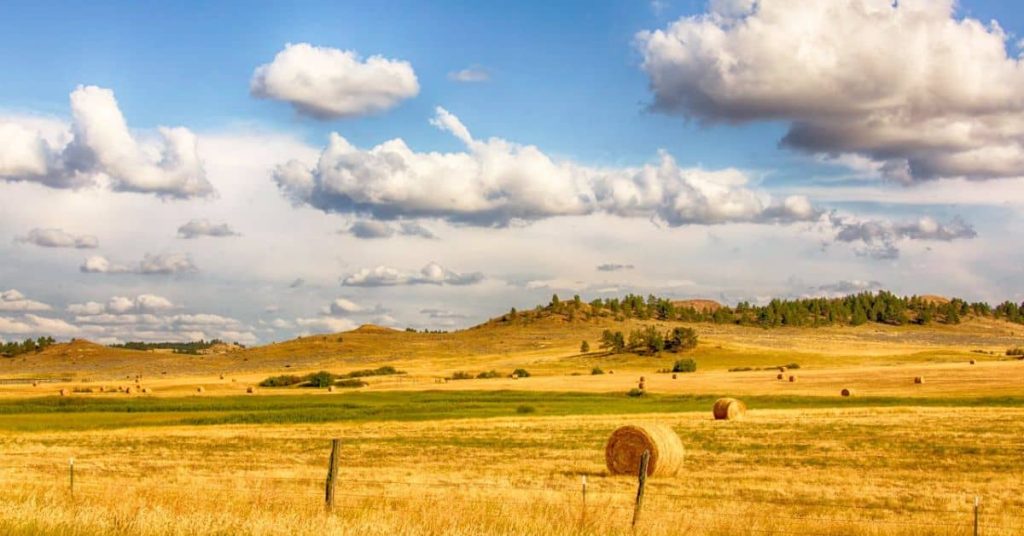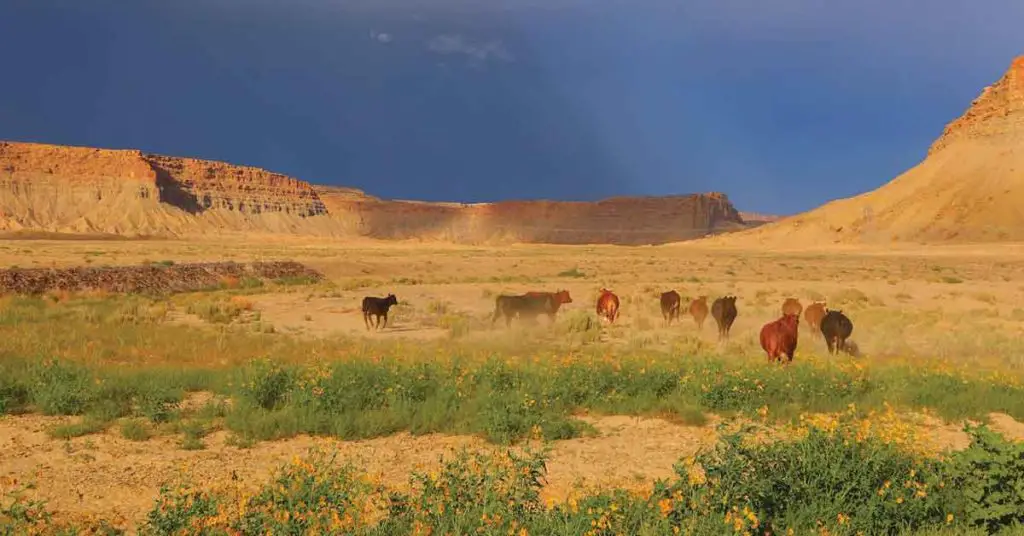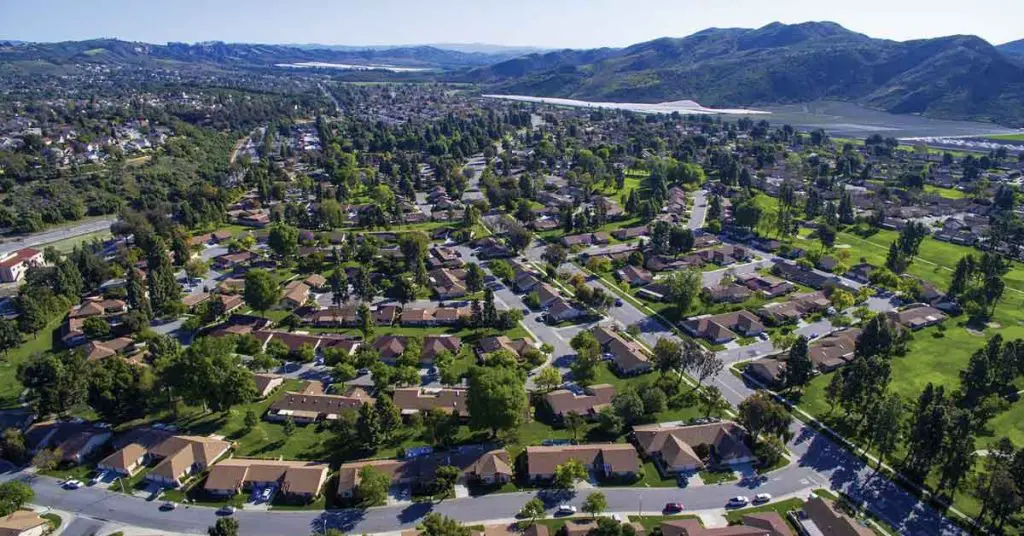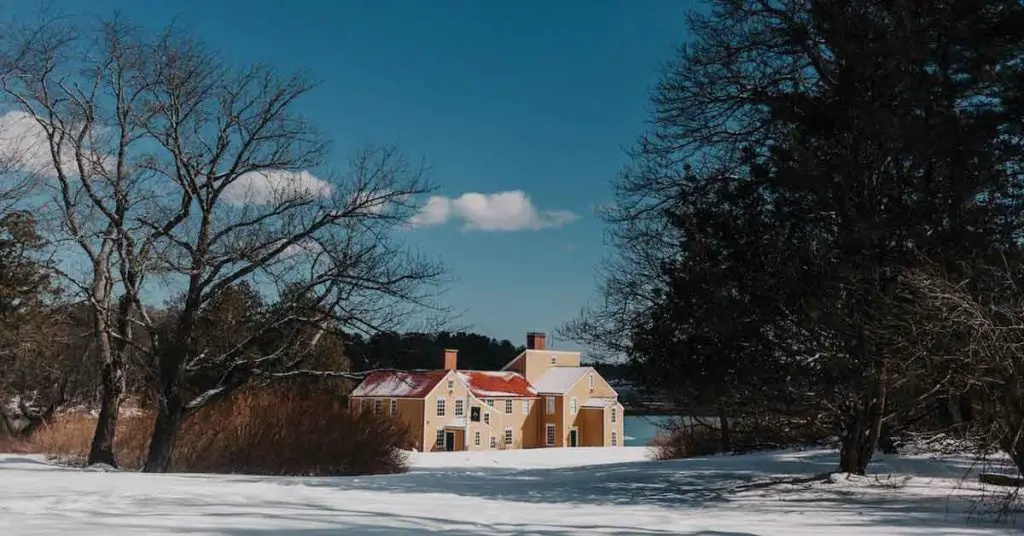Homesteading in Montana costs about $100 000 when you buy under twenty acres, secure water rights quickly, and winter-proof early.
During my first January on a windswept Lewistown ridge, our goat trough froze solid before dawn. A $12 stock-tank heater saved the herd and my sanity.
Keeping livestock watered all winter frees cash for seeds, not vet bills. I’ve gardened and raised dairy goats off-grid here for five Zone 3 winters as a certified Master Gardener.
Last year my neighbor filed DNRC Form 600 on day one, avoided a $700 penalty, and insulated his cabin floor.
Next we’ll cover the Land & Budget Blueprint, step-by-step Water Rights guide, and the Zone 3 Winter Checklist.
Here’s the nutshell version:
- Budget under $100 k for land, cabin, and power.
- File DNRC water rights within thirty days.
- Invest $4 200 to beat the first Zone 3 winter.
TL;DR? Jump into our FAQ section here.
Your Small-Parcel Montana Homestead Plan
In five minutes, you’ll see exactly how $100 000, a Form 600 filing, and $4 200 in winter prep turn a sub-20-acre Montana lot into an all-season homestead.
At a glance:
- Budget under $100 k total.
- File water-rights Form 600 fast.
- Spend $4 200 on winter prep.
- Choose parcels below 20 acres.
I still remember the January dawn when our goat trough froze solid in seconds. Sliding a $12 stock-tank heater under the ice kept the herd watered and my nerves steady. That one fix meant fresh milk all winter and zero vet calls, a reminder that small, early moves pay big.
Why start with less than 20 acres?
Buying small keeps taxes down, lets you fence faster, and leaves cash for essentials like a well and power. Montana’s average frost-free season hovers around 118 days, so every dollar saved on land can fund season-extending tools such as high tunnels.
What worked for me: I bought 12 acres, then fenced just two. Rotating goats on a tight paddock saved seed money for fruit trees.
Starter budget in plain numbers
- Land: $40 000 for 10–15 acres in eastern counties
- Closing & survey: $3 200
- Cabin kit & local labor: $28 000
- Well drilling (holiday discount): $10 500
- Solar starter array: $6 000
- Fencing & gates: $4 000
- Winterizing materials (insulation, heat tape): $4 200
- Contingency cushion: $4 000
Checklist for your first week
- Sign the land contract and record the deed.
- File DNRC Form 600 within 30 days to lock in exempt well rights
- Apply for a 30 % federal solar credit before buying panels.
- Order a soil test kit for Zone 3 crops.
- Price hay locally to avoid winter shortages.
- Set aside $500 for emergency insulation.
Following this blueprint lets you close on land, stay legal with water, and breeze through that first brutal winter without draining savings.
Next, let’s unpack Why Montana Homesteading Isn’t Like Anywhere Else so you can sidestep the quirks that trip up newcomers.
Why Montana Homesteading Isn’t Like Anywhere Else
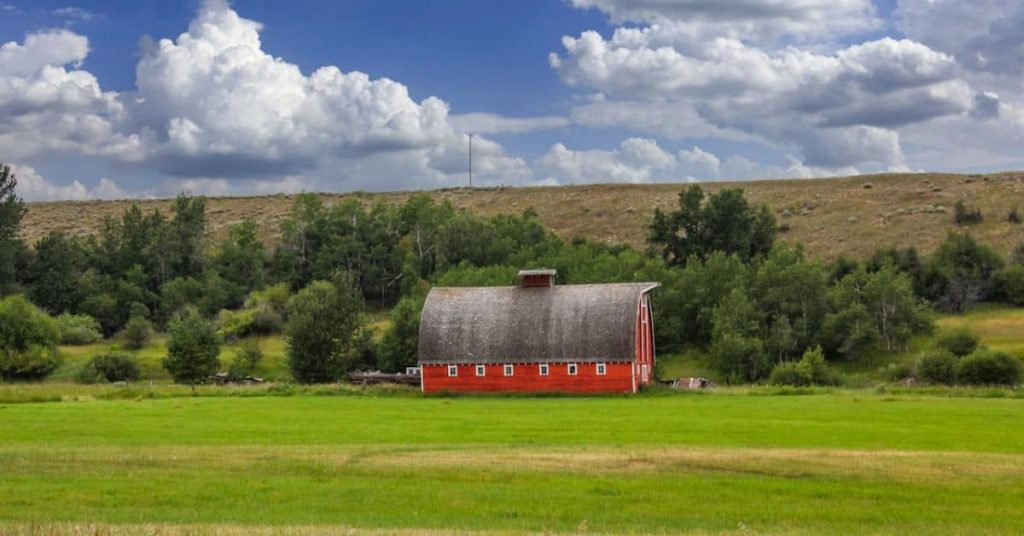
Open-range fence law, a 116-day frost-free season, and $1 200-per-acre land push every Montana homesteader to fence first, plant fast, and bargain-hunt counties.
Open-range fence law explained (livestock vs. neighbor duty)
Montana is legally open range: if your land isn’t fenced with at least two good wires, stray cattle may roam freely, and their owner isn’t liable for damage. (Source: Montana State Legislature)
What worked for me: I split a high-tensile fence with my neighbor. One weekend, two people, $1 800 each, cheaper than one winter of trampled hay.
Growing season & USDA zones 3-6: what they mean for crops
Central valleys average 108-116 frost-free days. That’s barely four months, so pick crops that finish in 90 days or use low tunnels.
Action plan:
- Start transplants indoors by April 1.
- Choose 80-day ‘Glacier’ tomatoes and 65-day ‘Yukon Gold’ potatoes.
- Install low tunnels June 1 for beans and squash.
- Use black mulch to warm soil 5 °F.
- Schedule fall garlic planting on October 1.
2025 land-price trends and county “hidden gems”
USDA reports 2024/25 Montana farm real-estate value at $1 200 per acre, up 8 % since 2022. Prices spike near Bozeman and Missoula, but Carter, Garfield, and Powder River counties still list parcels under $900 an acre.
Hidden-gem checklist:
- Shop estate auctions every November.
- Filter GIS maps for tax-delinquent lots under 20 acres.
- Offer cash with a 15-day close; sellers favor speed over price.
Master these three quirks now and you’ll dodge broken fences, frost-killed crops, and sticker-shock acres, saving cash for fruit trees instead of repairs. Next up, the Land & Budget Blueprint details exactly where that $100 000 goes.
Land & Budget Blueprint: Buying and Building Under $100k

Use county GIS filters, tax-lien auctions, and a lean build budget to land and finish a Montana starter homestead for about $93 700.
Buying right is half the battle. Most newcomers overspend on land, then stall when wells or cabins run over budget. Below is the exact plan I used to keep our total under six figures while still sleeping indoors by the first snowfall.
What worked for me: I bought a 12-acre ridge lot at a December tax sale for $38 500, then spent the holiday break framing a cabin shell with two friends. The fast close cut holding costs to a single month.
Where to find <20-acre parcels under $2 000 / acre
Small, affordable tracts hide in plain sight once you learn the county tools and auction calendar. Focus east of Billings where values stay near the statewide $1 200-per-acre average.
Action plan:
- Filter county GIS maps for “vacant agricultural” lots between 5 and 20 acres.
- Sort by assessed value; anything under $25 000 usually needs a quick sale.
- Call treasurers on the first business day after a tax deed is issued; many will add you to the auction email list.
County GIS map search tips
Most counties publish free interactive maps.
- Click the “layers” icon, enable parcel lines, and turn on tax status.
- Use the measurement tool to confirm acreage; listings often round up.
- Export a CSV of geocodes for field visits by phone GPS.
Example: Fergus County’s GIS portal let me pinpoint thirty-one vacant lots under 15 acres in one evening.
Auction & tax-lien sales tactics
Montana law requires counties to auction tax-deed land within months of title transfer.
- Arrive with a cashier’s check; many parcels close the same day.
- Bid on cloudy-title lots, cure liens later for pennies.
- Negotiate possession at closing so you can start fencing immediately.
I won two adjoining lots by being the only buyer holding certified funds.
Starter budget line-item chart
Budget discipline keeps dreams alive. Below is a proven template.
Land purchase costs vs. closing fees
- Land: $40 000 (typical 10-15 acres)
- Title, survey, recording: $3 200
Cabin-kit estimates and labor add-ons
- 12 × 24 shell kit: $25 000
- Two-week local labor: $3 000
Infrastructure: well, power, septic, driveway
- Well (holiday discount): $10 500
- Solar starter array: $6 000
- Septic permit and install: $4 500
- Gravel driveway: $2 500
Financing options and low-down rural loans
Cash offers win land fast, but smart loans keep reserves intact.
Action plan:
- USDA Single Family Direct Loans need no down payment and cover rural builds. (Source: Rural Development)
- Lot-and-construction combo loans release funds in stages, lowering interest.
- Owner-carry contracts often accept 10 % down with three-year balloons.
- Self-directed IRAs can buy land, then lease it to your homestead LLC.
- Pair a HELOC on an existing home with a short construction timeline.
Locking in land under budget lets you roll savings into the next critical step: filing Form 600 for water rights before the 30-day clock starts ticking.
Securing Water Rights & Rain Harvesting Legally
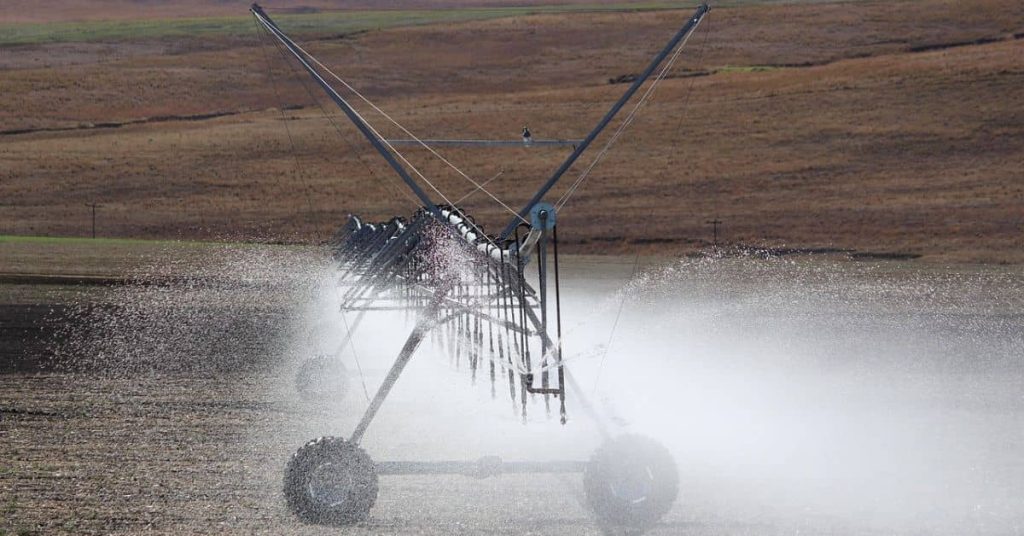
File DNRC Form 602 within 60 days of first pumping and keep any new pond or well under 35 gpm / 10 acre-feet to stay permit-exempt and fee-free.
Securing the legal right to every drop on your land stops headaches before they start. I filed my Form 602 the same week the driller pulled out, one trip to the county seat, $125, and I slept easy knowing no neighbor could “call” my well dry.
What worked for me: I measured flow with a five-gallon bucket and stopwatch, wrote 14 gpm on the form, and landed well inside the 35 gpm limit. The certificate arrived six weeks later.
Action plan:
- Drill first, file second: you have 60 days to submit Form 602 after water flows.
- Stay under 35 gpm and 10 acre-feet to skip a costly Form 600 permit.
- Log the well with Form 603; your driller sends it.
- Post the well ID tag within 30 days so inspectors can verify legality.
- Map any pond and confirm volume with the county GIS tool.
- Keep rain barrels below 1 acre-foot yearly to avoid “combined appropriation” flags.
- Save every receipt; you’ll need them if a senior right challenges you.
DNRC permit basics for exempt domestic wells
Montana treats wells under 35 gpm and 10 acre-feet as “exempt,” meaning you skip the long Form 600 permit line. You must still prove the use is domestic, lawn, or stock and file paperwork fast.
Key steps
- Drill the well and receive the Form 603 log from your driller.
- Confirm flow rate with a bucket test; record the lower of two tries.
- Submit Form 602 and the $125 fee within 60 days.
- Attach a county plat map marking the well and place of use.
- Wait for the certificate; priority date is DNRC’s stamp-in day.
A neighbor missed the 60-day window by a week and paid a double fee plus a notarized affidavit; avoid that pain.
Rain-water harvesting limits and storage rules
Montana lets you capture rain only if the total annual use, combined with any exempt well, stays under 10 acre-feet. That equals about 3.26 million gallons, plenty for gardens but not for a large pond.
Practical guidelines
- Barrel systems under 5 000 gallons need no notice.
- Ponds or tanks above 1 acre-foot push you toward a Form 600 permit.
- Use collected rain on-site only; off-site hauling voids the exemption.
- Install a first-flush diverter to keep debris out of storage.
- Record monthly levels; DNRC may request usage logs during drought calls.
Staying below the combined limit keeps you out of the “controlled groundwater area” conversations that chew up time.
Common filing mistakes and penalty fees
Paperwork errors cost both money and water priority.
Frequent slip-ups
- Late Form 602: miss 60 days and DNRC can assess extra fees and lower your priority.
- Overstated flow rate: list 40 gpm and you trigger full permitting.
- Wrong legal description: a single digit off moves your well to the neighbor’s lot.
- Ignoring combined appropriations: two small wells on one parcel can exceed the cap.
- Forgetting the filing fee: DNRC returns incomplete packets, resetting your clock.
I triple-checked GPS corners against the county GIS before filing, ten minutes that saved a month of corrections.
Nail these details now and your well, rain barrels, and garden pond stay legal for life, freeing you to focus on crops instead of court dates.
Surviving Zone 3 Winters: Checklist & Costs

Set aside about $4 200 for insulation, backup heat, and roof upgrades to breeze through your first Zone 3 winter without frozen pipes.
Montana’s winters hit –30 °F, the growing pause lasts just 108–116 frost-free days, and state code demands roofs handle 30 psf of snow.
I learned fast: one night our new cabin’s floor froze solid. Wrapping the skirting in 2-inch foam board and adding heat tape cost $210 and saved thousands in burst-pipe repairs.
What worked for me: I logged every winter expense in a notebook and kept the total under $4 200. That forced me to choose fixes that paid back in one season.
First-winter success list
- Insulate before Halloween: walls R-19, roof R-49 minimum.
- Add a secondary heater (wood or vented propane) sized for 8 000 BTU per 100 sq ft.
- Brace rafters to meet 30 psf snow load.
- Install heat tape on the main line and bury it 4 ft deep.
- Set a stock-tank heater or solar de-icer to keep livestock water open. (Source: NIFA Reporting Portal)
- Stack one cord of dry wood per 400 sq ft of cabin.
- Seal every crack with low-expansion foam; Montana’s weatherization program shows a dollar saved per dollar spent. (Source: Montana Public Health Services)
Insulation priorities: walls, roof, skirting
A tight shell keeps fuel bills sane. Montana’s weatherization manual backs air-sealing first, then deep insulation for best return.
Do this
- Blow R-49 cellulose in the attic; stop when the ruler hits 16 in.
- Dense-pack R-19 into 2×6 walls with a rental blower.
- Wrap skirting with 2-inch XPS and tape seams; this blocks wind and frost heave.
- Add a 6-mil poly vapor retarder under the floor joists before stapling batt insulation.
- Caulk every wire and pipe penetration with high-temp silicone.
Example: after adding R-49 to our roof, our stove burned one cord less wood, saving about $350.
Heating systems & backup power (wood, propane, solar)
Relying on one heater courts disaster. Pair a primary wood stove with a failsafe.
- EPA-certified wood stove sized around 30 000 BTU heats 600 sq ft comfortably.
- Direct-vent propane wall furnace lights even if the power drops.
- A 1 500-watt inverter and two 100-Ah batteries run the furnace fan overnight.
- Four-panel, 400-watt solar array keeps batteries topped without grid power.
- Clean the stove pipe every 30 days to prevent chimney fires.
Last February a three-day blizzard cut our power; the propane backup kept indoor temps at 55 °F, saving canned food and seedlings.
Livestock & water-freeze prevention tricks
Animals drink more when water stays above 40 °F. A solar stock-tank heater can keep a two-foot opening even at sub-zero temps.
- Float a rubber ball in buckets; animals nudge it aside to drink.
- Add black foam insulation around tanks to capture sunlight.
- Dig a 3-ft trench and bury the supply line in insulated pipe sleeve.
- Place tanks on the south side of windbreaks to cut chill.
- Check daily; early ice crystals signal heater failure.
Our goats stayed hydrated and gained weight all winter once the de-icer went in.
First-winter emergency kit essentials
Being snowed in is normal. Pack supplies before Thanksgiving.
- Two-week pantry of shelf-stable meals.
- Five gallons of kerosene for lamps and backup heat.
- Battery radio tuned to NWS for wind-chill advisories. (Source: National Weather Service)
- Portable jump-starter to crank generators in bitter cold.
- Extra heat tape and pipe wrap for surprises.
Adding these items turned storm nights from stressful to cozy reading time by the stove.
Nail this checklist now, and Zone 3’s brutal cold will feel like just another season on the land.
Real Stories: Solo & Veteran Homesteaders Share Lessons
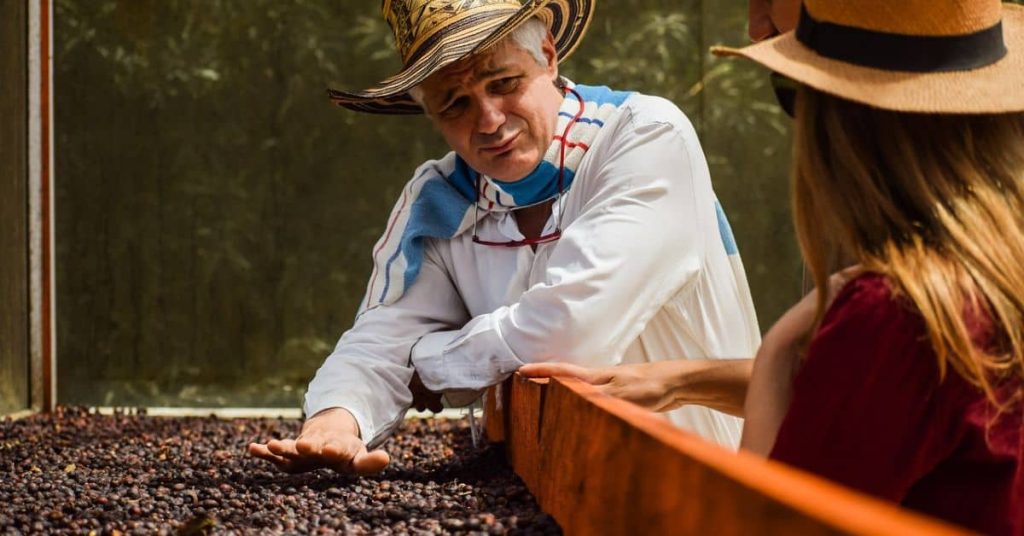
Hear Emmie’s freeze-proof hack and Logan’s zero-cost well so you dodge rookie bills and heartbreak.
Real neighbors make the best teachers. I asked two who started small, one solo, one veteran, to spill their wins and face-palm moments. Their stories prove tiny tweaks save thousands and shorten the learning curve for the rest of us.
What worked for me: I copied Emmie’s trick of hanging heat lamps under the goat stanchion. My trough stayed ice-free and my feed bill dropped because the herd drank more.
Takeaways you can swipe
- Lean on Extension agents for crop and animal checks, they answer free by phone.
- Film your build like Emmie did, sponsors often trade gear for shout-outs.
- Stack grants the way Logan paired a VA well grant with USDA solar funds.
- Keep a mistake log and update it monthly, small errors repeat unless written down.
- Schedule projects for shoulder seasons when contractors want work and discount rates.
- Join county stock-growers clubs for shared tools and hay discounts.
- Post progress weekly on social, followers spot issues before inspectors do.
Emmie’s 2-acre journey: budget wins & pipe mishaps
Emmie bought two wind-swept acres near Jordan for $29 000, cashing out a city condo. Her first winter, pipes froze solid twice. She installed a stock-tank heater and a $15 temperature probe, then wired a thrift-store heat lamp under the barn sink. Power draw stays under 300 watts, but water never drops below 38 °F.
Action plan:
- Record water temps morning and night to spot freezes early.
- Insulate exposed PEX with split-foam plus foil tape.
- Elevate hoses on pallets so drifting snow does not bury fittings.
- Capture melted snow in barrels for backup wash water.
Last season she sold goat milk soaps online, using the extra $1 100 to finish interior walls.
Logan’s VA grant path: well drilling on a dime
Logan left the Marine Corps with a 20 percent disability rating, qualifying him for the VA’s Specially Adapted Housing rural grant. He combined that $6 800 with USDA Rural Energy funds to offset a 220-foot well and DC pump. Total out-of-pocket: $0.
Steps Logan followed
- Filed VA Form 26-4555 online, approval in 45 days.
- Sent the award letter to a local well driller for a winter scheduling slot.
- Applied for USDA REAP micro-grant to cover a 450-watt solar pump array.
- Tracked every receipt, then mailed the packet to both agencies for reimbursement.
Now his water runs on sunlight, no monthly power bill.
Round-up of “wish I’d known” tips
Both homesteaders shared the same regrets:
- Start fencing before livestock, not after.
- Budget double for driveway gravel, mud eats tires in spring.
- Label every breaker on day one, future storms are less scary.
- Photograph permit papers and store them in the cloud.
- Say yes to neighbors’ help; loaned tractors beat rented ones every time.
Print this list and tape it to the fridge, the cheapest insurance you will ever buy.
FAQs: Montana Homestead Laws, Costs & Climate
Below are crisp answers to Montana’s most-googled homestead questions, land, laws, weather, and costs, all in one spot.
Knowing the rulebook saves time and lawyer fees.
What worked for me: I printed the fence statute and kept it in my truck; one glance settled a pasture dispute on the spot.
Is there still free land in Montana?
Rumors linger from the 1862 Homestead Act, but no state-run free-land program exists today. A few prairie towns, Baker and Ekalaka, offer infill lots if you build within 18 months and pay utilities. Check city websites each January when lots renew.
Try this
Call the city clerk’s office for the latest lot list.
Factor in tap fees; water hookups run $3 000-$8 000.
Budget a modular home that meets the 18-month deadline.
When I priced Ekalaka’s lots at $1, they still cost $6 500 after hookups; cheap, but not “free.”
What is the 2025 homestead exemption amount?
The Montana homestead declaration protects $393 702 of equity from most creditors. File the single-page form with your county clerk before claims arise.
Action plan:
Download the form from the Department of Revenue site.
List every adult owner on title.
File and pay the $7 recording fee.
Store a stamped copy in your wildfire go-bag.
I filed ours during lunch, ten minutes, lifelong shield.
Do I need to fence my land against cattle?
Yes. Under open-range law (MCA § 81-4-101) livestock may roam; landowners must fence animals out.
Fence smart
Use 4-strand high-tensile wire; material cost ≈ $1 / ft.
Brace corners with treated posts set 3 ft deep.
Hang reflective tags to deter nighttime collisions.
My shared fence cost $1 800 each after splitting with a neighbor.
Which crops thrive in zone 3b’s short season?
With 108-116 frost-free days you need 90-day cultivars.
‘Glacier’ tomato (56 days)
‘Yukon Gold’ potato (65 days)
‘Provider’ bush bean (50 days)
‘Early Doll’ sweet corn (59 days)
‘Black Beauty’ zucchini (48 days)
Start transplants by April 1 under lights. A low tunnel adds 2-3 weeks of safety.
How high is the probate-avoidance threshold?
Montana’s small-estate affidavit applies to estates ≤ $50 000 (personal property). Real estate still needs formal probate unless it’s in a trust or has a transfer-on-death deed.
Skip probate headaches
Title land with a beneficiary deed.
Keep bank accounts TOD to heirs.
Log big assets in a home inventory app.
A $19 courthouse deed filing saved my kids months of court time on a prior property, small prep, big payoff.
Next 30-Day Action Roadmap: Grants, Incentives & Final Paperwork

In the next 30 days, file your homestead declaration, submit the SB-381 pilot-parcel form, and lock a 30 percent solar credit to shave thousands off start-up costs.
Your land is under contract and the clock is ticking. The first month decides whether you keep equity safe, grab free money, and slash future tax bills. I stuck a calendar on the fridge, color-coded tasks, and cleared them in fifteen-minute bursts after chores. That habit wrapped paperwork while snow piled up outside.
What worked for me: Filing the homestead declaration on day three cost seven dollars and shielded nearly four hundred thousand dollars in equity from creditors. The peace of mind was worth far more.
Quick 30-day punch list
- Record the deed, then file the homestead declaration before day 7.
- Apply for an SB-381 pilot parcel slot the same week; approvals are first-come.
- Upload IRS Form 5695 for the 30 percent federal solar credit while quotes are fresh.
- Enroll in Montana’s Alternative Energy Revolving Loan for zero-percent bridge funds.
- Submit agricultural classification forms before your county’s spring deadline to cut property tax by up to 80 percent.
- Photocopy every receipt and store a backup in the cloud.
- Set phone reminders three days before each deadline; late fees stack fast.
Homestead declaration & exemption filing
The Montana homestead declaration protects $393 702 of equity in 2025, and the cap rises four percent yearly.
- Download the one-page form from Montana LawHelp or the county clerk site.
- List every adult owner, print names exactly as on the deed.
- Attach the legal description copied from the warranty deed.
- Pay the $7 recording fee and get a stamped copy.
- Store a scan in your wildfire go-bag.
A neighbor skipped this step and lost a tractor in a creditor seizure; ten minutes of paperwork would have saved it.
SB-381 state-land pilot parcel application
Senate Bill 381, filed in 2025, opens small state-owned parcels for homesteading under a lease-to-own model.
- Create an online account at MyMT.gov and search “Future Homesteading Act.”
- Upload proof of Montana residency and a basic land-use plan.
- Choose up to three parcel numbers; approvals follow a lottery if demand exceeds supply.
- Expect a twenty-year lease at two percent of assessed value, converting to fee title after improvements meet code.
- Track application status weekly; unclaimed parcels recycle every quarter.
I was sixth on the list; a quick submission bumped me ahead of twelve late filers.
Federal & Montana solar incentives checklist
The Federal Residential Clean Energy Credit pays back thirty percent of system cost, no cap until 2032. Pair it with Montana’s Alternative Energy Revolving Loan, which offers zero-percent loans up to $40 000.
- Collect itemized quotes, then file IRS Form 5695 with your return.
- Apply for the state loan online; approvals average fourteen days.
- Combine both with USDA REAP grants if you plan farm revenue.
- Keep receipts for batteries, wiring, and labor; all qualify.
- Schedule installation before snowfall to claim credits this tax year.
Solar trimmed my generator fuel bill by $900 in the first winter.
County-by-county ag-tax breaks and deadlines
Qualifying as agricultural land cuts property tax sevenfold compared with non-qualified acreage.
- Show proof of $1 500 gross ag sales or a crop plan covering at least twenty acres.
- File Form AB-26 with the county assessor by March 1.
- Re-file only if land use changes; the status renews automatically.
- Some counties waive the sales test for first-year start-ups if seeding is underway, ask in writing.
- Keep seed receipts and livestock purchase slips; auditors request them.
My tax bill dropped from $1 480 to $312 after classification, freeing cash for orchard trees.
Finish this roadmap within 30 days and the legal, financial, and energy pillars of your homestead will stand solid for decades.
Recap: Homesteading in Montana
Surviving that first icy Zone 3 winter, pipes, livestock water, and all, is the toughest hurdle you’ll face. Master the insulation basics, file the right forms, and suddenly Montana’s cold becomes background noise while your garden plans move forward.
With land secure, water legal, and a snug cabin, you’re free to dream: orchard rows, solar panels, maybe a milk cow next spring. Your choices this month set the stage for decades of low-stress living.
Share your own wins or wipeouts in the comments so we can all learn faster.
Disclaimer: The information provided in this article is for general informational purposes only and is not intended to be a substitute for professional advice. The author of this article does not claim to be an expert in homesteading and the information provided should not be relied upon to make decisions about your own homesteading journey. Please do your own research and consult with a qualified professional before making any decisions about your homestead.
Share via:

Co-Founder at Homesteading Simple | Horticulture & Sustainable Living Educator | 25 Years in Practical Homesteading

